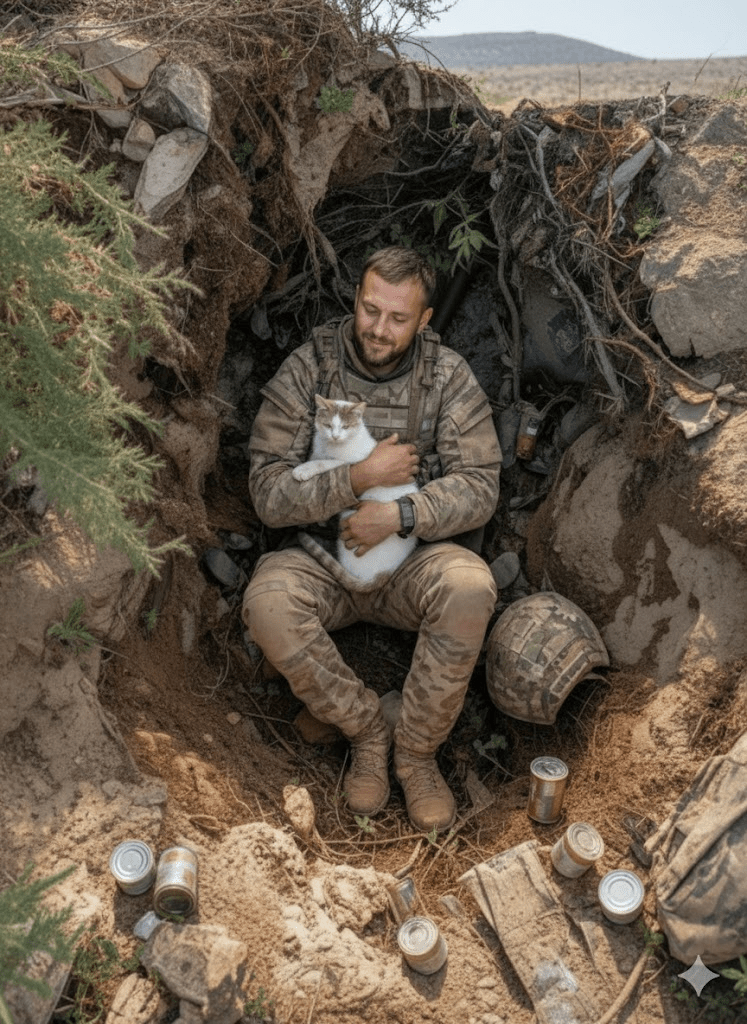In the unforgiving theatre of war, where the cacophony of conflict and the ever-present shadow of danger loom large, moments of unexpected solace can profoundly impact the human spirit. The raw, often brutal reality of military life is frequently punctuated by narratives of resilience, camaraderie, and the enduring quest for humanity amidst the dehumanizing conditions of battle. Yet, some stories emerge that offer a unique perspective, highlighting the profound comfort and psychological anchor found in the most unlikely of companions. One such narrative unfolds in a series of poignant photographs, depicting a soldier in what appears to be a defensive position or a temporary shelter, sharing his space and his heart with a feline friend. This isn’t just a casual encounter; it’s a vivid illustration of the deep emotional connection that can form, transcending the chaos of war and offering a vital touchstone of normalcy and affection. The images speak volumes about the quiet moments that sustain individuals in extraordinary circumstances, underscoring the universal need for connection, even when surrounded by desolation. The cat, a creature of serene independence, becomes a symbol of peace and warmth, a silent witness to the soldier’s daily struggle, and an innocent recipient of his care and tenderness. This visual story prompts us to look beyond the headlines of conflict and consider the intricate tapestry of human experience within it, revealing how even in the grimmest settings, the simplest bonds can offer immense strength and a powerful reminder of life’s intrinsic value.
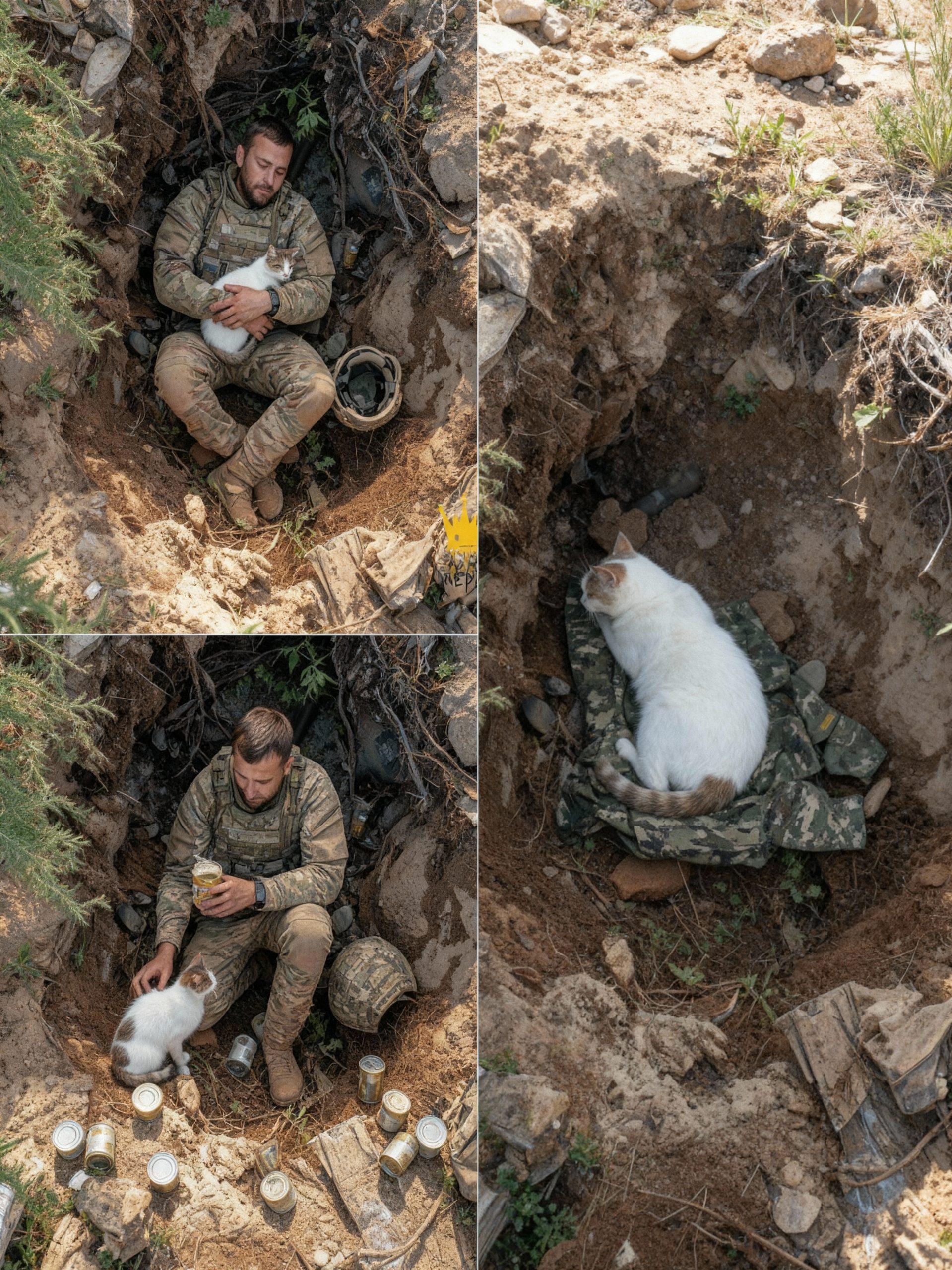
The images capture a soldier, clad in camouflage, nestled in a makeshift trench or dug-out shelter. His expression, though tired, is softened by the presence of a white cat with ginger markings. In one frame, he cradles the feline gently, its soft fur a stark contrast to his rugged uniform and the rough earth around them. This intimate gesture suggests more than just passive coexistence; it speaks to an active bond, a shared vulnerability that war often fosters between individuals and even between different species. The cat, seemingly comfortable and trusting, embodies a sense of calm that is likely a rare commodity in such an environment. Its presence transforms a bleak, utilitarian space into one imbued with a semblance of domesticity and warmth. The simple act of holding a pet can ground a person, offering a tangible connection to the familiar world outside the immediate dangers of the frontline. For a soldier far from home, this connection can be an invaluable psychological lifeline, a momentary escape from the grim realities of their mission.
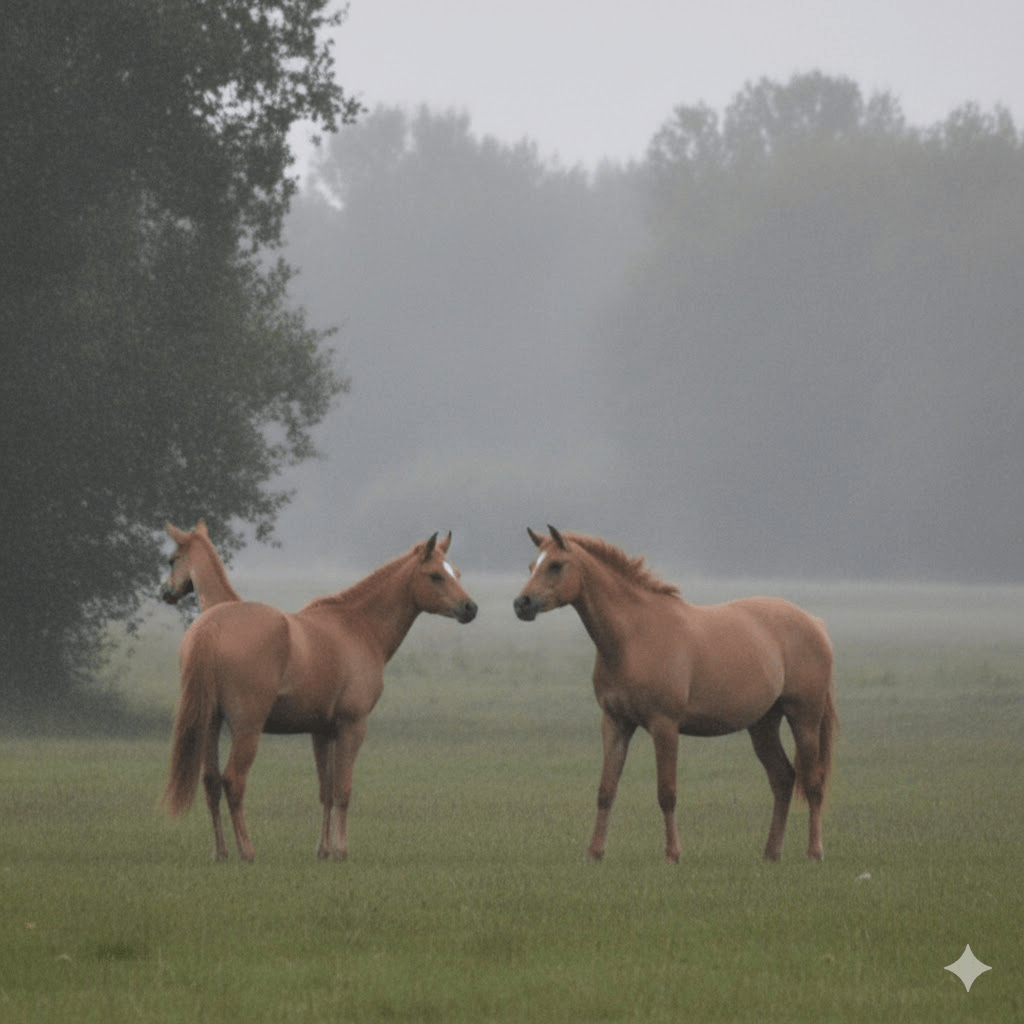
These scenes resonate deeply because they highlight the profound impact animals can have on human well-being, especially in high-stress environments. Pet companionship has long been recognized for its therapeutic benefits, ranging from reducing stress and anxiety to providing unconditional affection. In a combat zone, where predictable threats and constant vigilance are the norm, an animal’s non-judgmental presence can be a powerful antidote to isolation and emotional strain. The rhythmic purring of a cat, the softness of its fur, or its simple demand for attention can offer a much-needed distraction from the grim thoughts that often accompany prolonged exposure to conflict. It allows for a brief return to a state of peace, a moment where the soldier is not defined by his role in war but by his capacity for kindness and care. This mutual exchange, where the soldier provides safety and sustenance, and the cat offers comfort, illustrates a symbiotic relationship born out of necessity and forged in challenging circumstances.
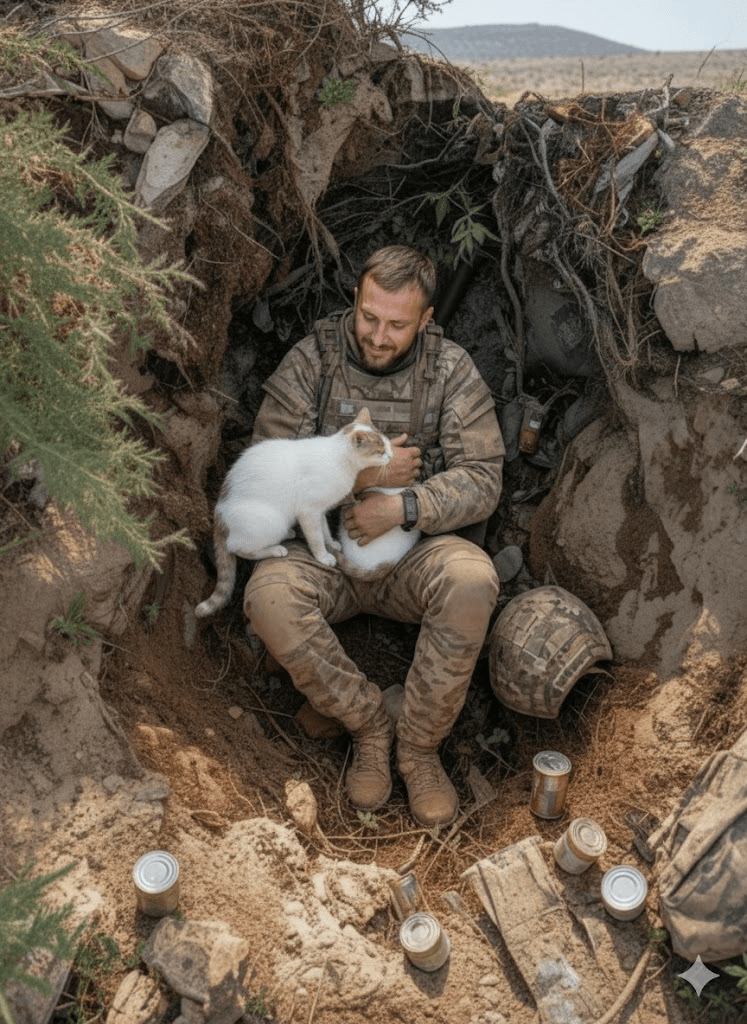
The image further reveals the practicalities of this companionship. Cans of food are visible near the soldier, suggesting that he shares his rations with his feline companion. This detail underscores the depth of his commitment and care, as resources in a combat zone are often scarce and precious. Sacrificing a portion of his own supplies for the well-being of an animal speaks volumes about his character and the value he places on this bond. It also highlights the resourcefulness often required in war, as soldiers adapt to their surroundings and find ways to maintain a semblance of life and compassion despite the harsh conditions. The helmet resting nearby, a constant reminder of the ever-present danger, contrasts sharply with the gentle act of feeding and nurturing the cat, further emphasizing the human desire to protect and care even amidst destruction.
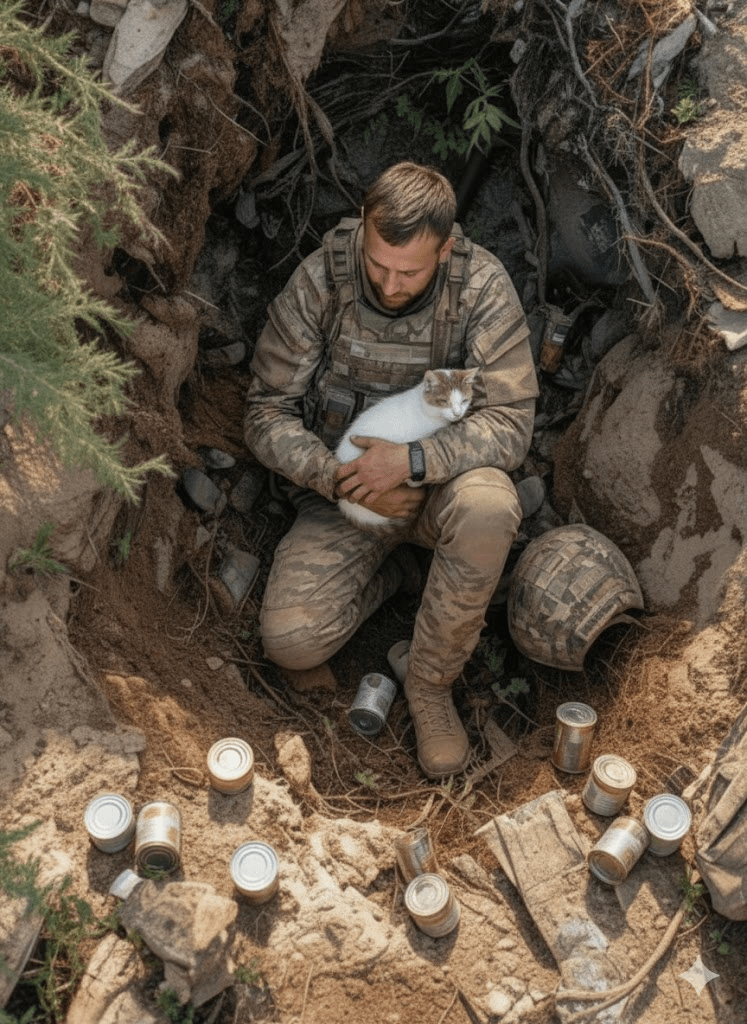
Moreover, the cat’s presence can serve as a vital emotional outlet for soldiers. In environments where expressing vulnerability or distress might be perceived as a weakness, an animal offers a safe, non-judgmental confidant. It allows for moments of unguarded affection and provides a consistent, comforting presence that human companions, often dealing with their own struggles, might not always be able to provide. This unspoken understanding between the soldier and the cat can be a powerful emotional release, alleviating some of the immense psychological pressure inherent in combat situations. It is a form of silent therapy, a connection that transcends language barriers and offers a profound sense of connection and belonging when human interaction is often strained by the circumstances of war.
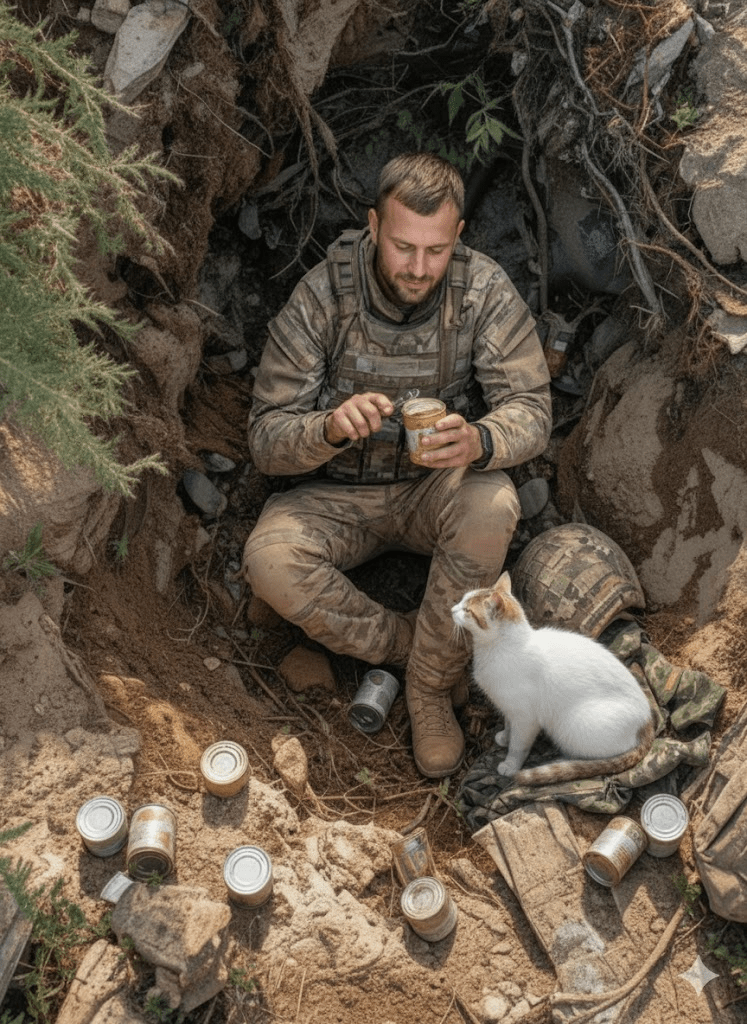
From a broader perspective, stories like this highlight the universal human capacity for empathy and care, even when faced with the most extreme conditions. They remind us that soldiers are not just combatants but individuals with complex emotional lives, capable of deep affection and compassion. These narratives contribute to a more nuanced understanding of military life, moving beyond simplistic portrayals of heroism or suffering to reveal the intricate human experience within war. The soldier and his cat are not merely survivors; they are a testament to the enduring power of connection and the unexpected ways in which hope and comfort can flourish even in the most desolate landscapes. This bond becomes a small beacon of light, a testament to the resilience of the human spirit and its ability to find and create beauty and meaning even amidst the destruction of war.
